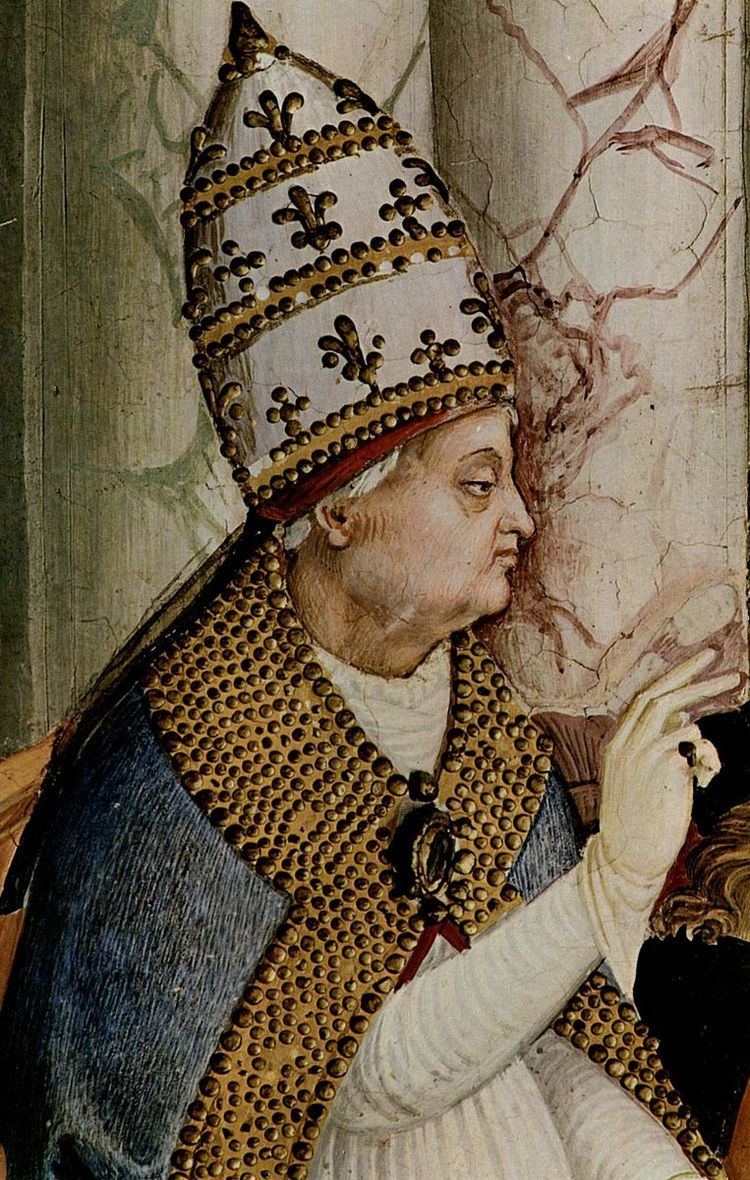 | ||
The Council of Mantua of 1459, or Congress of Mantua, was a religious meeting convoked by Pope Pius II, who had been elected to the Papacy in the previous year and was engaged in planning war against the Ottoman Turks, who had taken Constantinople in 1453. His call went out to the rulers of Europe, in an agonized plea to turn from internecine warfare to face Christendom's common enemy.
Contents
Process of the Council of 1459
Pius entered Mantua on 27 May; his long progress to the place of assembly resembled a triumphal procession. He opened the council on the first of June and waited in Mantua as the guest of Ludovico III Gonzaga until September for the various representatives to assemble. On 26 September he called for a new crusade against the Ottomans. The refugee Cardinal Bessarion and Cardinal Juan de Torquemada were in attendance. The Duke of Burgundy was represented at the Council by the duke of Clèves, who brought in his train the young Burgundian cleric Ferry de Clugny. The humanist Isotta Nogarola wrote and dispatched to Pope Pius an oration favoring a crusade.
The painter Mantegna had been invited to Mantua by Ludovico in 1457; although remaining in Padua, he painted the Agony in the Garden that is in the National Gallery, London, for its Podestà; in Mantegna's picture, the disciples sleep in Gethsemane, while Jerusalem is envisaged as Constantinople, with the rising crescent moon signifying its capture by the Turk. Long after the pope's death, the artist Pinturicchio painted the convocation of the council among the scene's from Pius' life on the walls of the Piccolomini Library in Siena Cathedral.
Criticism and effects
Not all the leaders of the Church were in favor of a Crusade. The Venetian Cardinal Ludovico Trevisan, patriarch of Aquileia, met Pius in Siena, 16 March, and followed the pope to Mantua, although he opposed the aims of the Council.
By the time the Council was disbanded in January 1460, an ineffectual call for a new crusade against the Infidel had been decided upon, and proclaimed by Pius on 14 January. One of the only European rulers to fully endorse the Crusade was Vlad III, though he was too preoccupied defending his native Wallachia to contribute troops. The paper crusade was to last for three years and was to prove ineffectual. Pius would die in Ancona, making one last effort to launch this campaign by his own example.
Historians of the Tarot like Heinrich Brockhaus have asserted that the so-called Tarocchi di Mantegna were devised and made during the sitting of this council.
